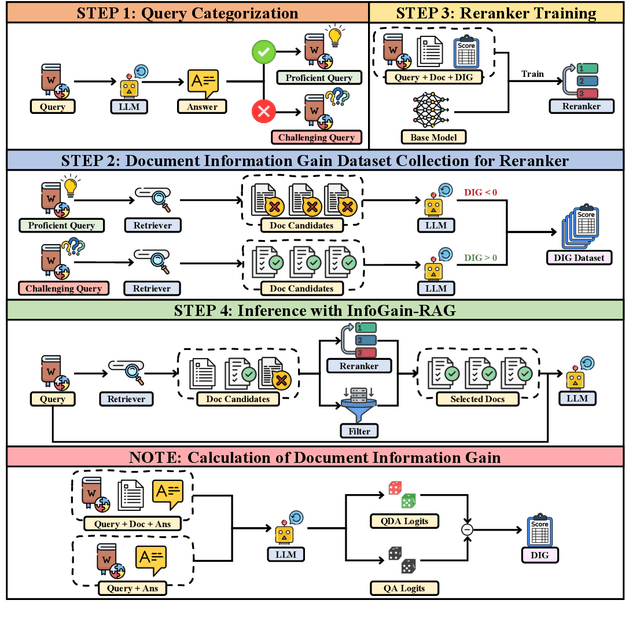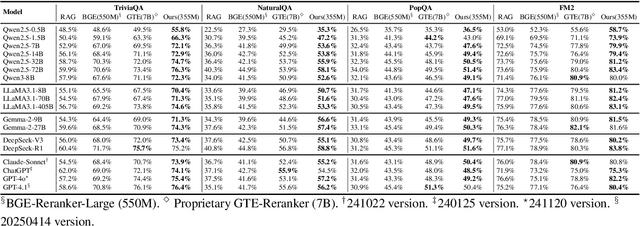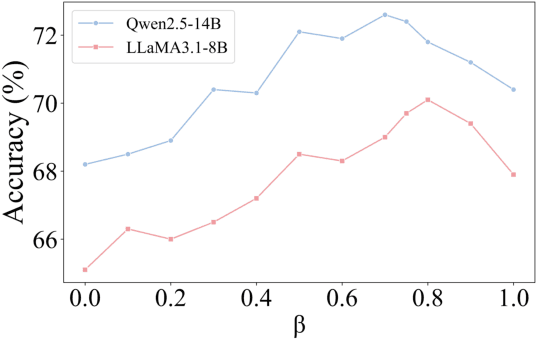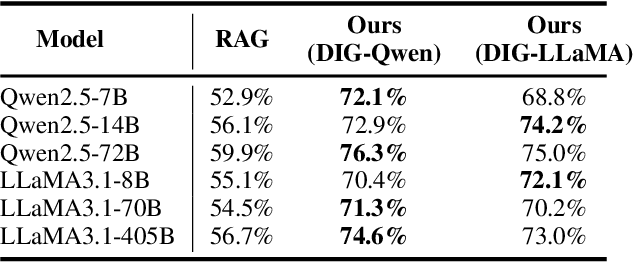Han Li
Southern University of Science and Technology
Benchmarking neural surrogates on realistic spatiotemporal multiphysics flows
Dec 21, 2025Abstract:Predicting multiphysics dynamics is computationally expensive and challenging due to the severe coupling of multi-scale, heterogeneous physical processes. While neural surrogates promise a paradigm shift, the field currently suffers from an "illusion of mastery", as repeatedly emphasized in top-tier commentaries: existing evaluations overly rely on simplified, low-dimensional proxies, which fail to expose the models' inherent fragility in realistic regimes. To bridge this critical gap, we present REALM (REalistic AI Learning for Multiphysics), a rigorous benchmarking framework designed to test neural surrogates on challenging, application-driven reactive flows. REALM features 11 high-fidelity datasets spanning from canonical multiphysics problems to complex propulsion and fire safety scenarios, alongside a standardized end-to-end training and evaluation protocol that incorporates multiphysics-aware preprocessing and a robust rollout strategy. Using this framework, we systematically benchmark over a dozen representative surrogate model families, including spectral operators, convolutional models, Transformers, pointwise operators, and graph/mesh networks, and identify three robust trends: (i) a scaling barrier governed jointly by dimensionality, stiffness, and mesh irregularity, leading to rapidly growing rollout errors; (ii) performance primarily controlled by architectural inductive biases rather than parameter count; and (iii) a persistent gap between nominal accuracy metrics and physically trustworthy behavior, where models with high correlations still miss key transient structures and integral quantities. Taken together, REALM exposes the limits of current neural surrogates on realistic multiphysics flows and offers a rigorous testbed to drive the development of next-generation physics-aware architectures.
NoveltyRank: Estimating Conceptual Novelty of AI Papers
Dec 12, 2025Abstract:With the growing ease of academic publishing, the volume of research papers, especially in AI-related fields, has surged dramatically. This flood of publications makes it difficult for truly novel and impactful work to stand out, and manual novelty assessment is often unstable and time-consuming. Our project aims to develop a model that estimates and ranks the conceptual novelty of AI papers, enabling a data-driven and scalable assessment of research originality. Such a system can help researchers efficiently identify submissions that introduce genuinely innovative ideas rather than minor variants, and provide conference reviewers with a quantitative and consistent signal of novelty. Our approach evaluates novelty primarily through a paper's title, abstract, and semantic similarity to prior literature. Given the motivation of novelty estimation, we explore two task formulations with different modeling objectives, each offering a different perspective: (1) binary classification, which predicts the paper's absolute novelty from learned patterns of prior novel works, and (2) pairwise novelty comparison, which learns to distinguish papers by relative novelty over others. We fine-tune Qwen3-4B-Instruct-2507 and SciBERT on both tasks, benchmarking against GPT-5.1 to analyze how task formulation and modeling choices affect performance. The implementation is publicly available at https://github.com/ZhengxuYan/NoveltyRank.
Error-Propagation-Free Learned Video Compression With Dual-Domain Progressive Temporal Alignment
Dec 11, 2025Abstract:Existing frameworks for learned video compression suffer from a dilemma between inaccurate temporal alignment and error propagation for motion estimation and compensation (ME/MC). The separate-transform framework employs distinct transforms for intra-frame and inter-frame compression to yield impressive rate-distortion (R-D) performance but causes evident error propagation, while the unified-transform framework eliminates error propagation via shared transforms but is inferior in ME/MC in shared latent domains. To address this limitation, in this paper, we propose a novel unifiedtransform framework with dual-domain progressive temporal alignment and quality-conditioned mixture-of-expert (QCMoE) to enable quality-consistent and error-propagation-free streaming for learned video compression. Specifically, we propose dualdomain progressive temporal alignment for ME/MC that leverages coarse pixel-domain alignment and refined latent-domain alignment to significantly enhance temporal context modeling in a coarse-to-fine fashion. The coarse pixel-domain alignment efficiently handles simple motion patterns with optical flow estimated from a single reference frame, while the refined latent-domain alignment develops a Flow-Guided Deformable Transformer (FGDT) over latents from multiple reference frames to achieve long-term motion refinement (LTMR) for complex motion patterns. Furthermore, we design a QCMoE module for continuous bit-rate adaptation that dynamically assigns different experts to adjust quantization steps per pixel based on target quality and content rather than relies on a single quantization step. QCMoE allows continuous and consistent rate control with appealing R-D performance. Experimental results show that the proposed method achieves competitive R-D performance compared with the state-of-the-arts, while successfully eliminating error propagation.
CroPS: Improving Dense Retrieval with Cross-Perspective Positive Samples in Short-Video Search
Nov 19, 2025Abstract:Dense retrieval has become a foundational paradigm in modern search systems, especially on short-video platforms. However, most industrial systems adopt a self-reinforcing training pipeline that relies on historically exposed user interactions for supervision. This paradigm inevitably leads to a filter bubble effect, where potentially relevant but previously unseen content is excluded from the training signal, biasing the model toward narrow and conservative retrieval. In this paper, we present CroPS (Cross-Perspective Positive Samples), a novel retrieval data engine designed to alleviate this problem by introducing diverse and semantically meaningful positive examples from multiple perspectives. CroPS enhances training with positive signals derived from user query reformulation behavior (query-level), engagement data in recommendation streams (system-level), and world knowledge synthesized by large language models (knowledge-level). To effectively utilize these heterogeneous signals, we introduce a Hierarchical Label Assignment (HLA) strategy and a corresponding H-InfoNCE loss that together enable fine-grained, relevance-aware optimization. Extensive experiments conducted on Kuaishou Search, a large-scale commercial short-video search platform, demonstrate that CroPS significantly outperforms strong baselines both offline and in live A/B tests, achieving superior retrieval performance and reducing query reformulation rates. CroPS is now fully deployed in Kuaishou Search, serving hundreds of millions of users daily.
DualGR: Generative Retrieval with Long and Short-Term Interests Modeling
Nov 16, 2025Abstract:In large-scale industrial recommendation systems, retrieval must produce high-quality candidates from massive corpora under strict latency. Recently, Generative Retrieval (GR) has emerged as a viable alternative to Embedding-Based Retrieval (EBR), which quantizes items into a finite token space and decodes candidates autoregressively, providing a scalable path that explicitly models target-history interactions via cross-attention. However, three challenges persist: 1) how to balance users' long-term and short-term interests , 2) noise interference when generating hierarchical semantic IDs (SIDs), 3) the absence of explicit modeling for negative feedback such as exposed items without clicks. To address these challenges, we propose DualGR, a generative retrieval framework that explicitly models dual horizons of user interests with selective activation. Specifically, DualGR utilizes Dual-Branch Long/Short-Term Router (DBR) to cover both stable preferences and transient intents by explicitly modeling users' long- and short-term behaviors. Meanwhile, Search-based SID Decoding (S2D) is presented to control context-induced noise and enhance computational efficiency by constraining candidate interactions to the current coarse (level-1) bucket during fine-grained (level-2/3) SID prediction. % also reinforcing intra-class consistency. Finally, we propose an Exposure-aware Next-Token Prediction Loss (ENTP-Loss) that treats "exposed-but-unclicked" items as hard negatives at level-1, enabling timely interest fade-out. On the large-scale Kuaishou short-video recommendation system, DualGR has achieved outstanding performance. Online A/B testing shows +0.527% video views and +0.432% watch time lifts, validating DualGR as a practical and effective paradigm for industrial generative retrieval.
SWE-Compass: Towards Unified Evaluation of Agentic Coding Abilities for Large Language Models
Nov 07, 2025Abstract:Evaluating large language models (LLMs) for software engineering has been limited by narrow task coverage, language bias, and insufficient alignment with real-world developer workflows. Existing benchmarks often focus on algorithmic problems or Python-centric bug fixing, leaving critical dimensions of software engineering underexplored. To address these gaps, we introduce SWE-Compass1, a comprehensive benchmark that unifies heterogeneous code-related evaluations into a structured and production-aligned framework. SWE-Compass spans 8 task types, 8 programming scenarios, and 10 programming languages, with 2000 high-quality instances curated from authentic GitHub pull requests and refined through systematic filtering and validation. We benchmark ten state-of-the-art LLMs under two agentic frameworks, SWE-Agent and Claude Code, revealing a clear hierarchy of difficulty across task types, languages, and scenarios. Moreover, by aligning evaluation with real-world developer practices, SWE-Compass provides a rigorous and reproducible foundation for diagnosing and advancing agentic coding capabilities in large language models.
From Linear Probing to Joint-Weighted Token Hierarchy: A Foundation Model Bridging Global and Cellular Representations in Biomarker Detection
Nov 07, 2025Abstract:AI-based biomarkers can infer molecular features directly from hematoxylin & eosin (H&E) slides, yet most pathology foundation models (PFMs) rely on global patch-level embeddings and overlook cell-level morphology. We present a PFM model, JWTH (Joint-Weighted Token Hierarchy), which integrates large-scale self-supervised pretraining with cell-centric post-tuning and attention pooling to fuse local and global tokens. Across four tasks involving four biomarkers and eight cohorts, JWTH achieves up to 8.3% higher balanced accuracy and 1.2% average improvement over prior PFMs, advancing interpretable and robust AI-based biomarker detection in digital pathology.
GRADE: Personalized Multi-Task Fusion via Group-relative Reinforcement Learning with Adaptive Dirichlet Exploratio
Oct 09, 2025Abstract:Overall architecture of the personalized multi-objective ranking system. It comprises: (1) a Feature Center and Prerank Model for initial feature processing and candidate generation; (2) a Multi-Task Learning (MTL) model predicting various user feedback signals; (3) a Multi-Task Fusion (MTF) module (our proposed GRADE framework) that learns personalized weights ($w_1, \dots, w_n$); these weights are then applied to calculate final scores and sorted to generate a blended ranking by the Blended Ranking Model, which ultimately delivers results to users.
GoalRank: Group-Relative Optimization for a Large Ranking Model
Sep 26, 2025Abstract:Mainstream ranking approaches typically follow a Generator-Evaluator two-stage paradigm, where a generator produces candidate lists and an evaluator selects the best one. Recent work has attempted to enhance performance by expanding the number of candidate lists, for example, through multi-generator settings. However, ranking involves selecting a recommendation list from a combinatorially large space. Simply enlarging the candidate set remains ineffective, and performance gains quickly saturate. At the same time, recent advances in large recommendation models have shown that end-to-end one-stage models can achieve promising performance with the expectation of scaling laws. Motivated by this, we revisit ranking from a generator-only one-stage perspective. We theoretically prove that, for any (finite Multi-)Generator-Evaluator model, there always exists a generator-only model that achieves strictly smaller approximation error to the optimal ranking policy, while also enjoying scaling laws as its size increases. Building on this result, we derive an evidence upper bound of the one-stage optimization objective, from which we find that one can leverage a reward model trained on real user feedback to construct a reference policy in a group-relative manner. This reference policy serves as a practical surrogate of the optimal policy, enabling effective training of a large generator-only ranker. Based on these insights, we propose GoalRank, a generator-only ranking framework. Extensive offline experiments on public benchmarks and large-scale online A/B tests demonstrate that GoalRank consistently outperforms state-of-the-art methods.
InfoGain-RAG: Boosting Retrieval-Augmented Generation via Document Information Gain-based Reranking and Filtering
Sep 16, 2025



Abstract:Retrieval-Augmented Generation (RAG) has emerged as a promising approach to address key limitations of Large Language Models (LLMs), such as hallucination, outdated knowledge, and lacking reference. However, current RAG frameworks often struggle with identifying whether retrieved documents meaningfully contribute to answer generation. This shortcoming makes it difficult to filter out irrelevant or even misleading content, which notably impacts the final performance. In this paper, we propose Document Information Gain (DIG), a novel metric designed to quantify the contribution of retrieved documents to correct answer generation. DIG measures a document's value by computing the difference of LLM's generation confidence with and without the document augmented. Further, we introduce InfoGain-RAG, a framework that leverages DIG scores to train a specialized reranker, which prioritizes each retrieved document from exact distinguishing and accurate sorting perspectives. This approach can effectively filter out irrelevant documents and select the most valuable ones for better answer generation. Extensive experiments across various models and benchmarks demonstrate that InfoGain-RAG can significantly outperform existing approaches, on both single and multiple retrievers paradigm. Specifically on NaturalQA, it achieves the improvements of 17.9%, 4.5%, 12.5% in exact match accuracy against naive RAG, self-reflective RAG and modern ranking-based RAG respectively, and even an average of 15.3% increment on advanced proprietary model GPT-4o across all datasets. These results demonstrate the feasibility of InfoGain-RAG as it can offer a reliable solution for RAG in multiple applications.
 Add to Chrome
Add to Chrome Add to Firefox
Add to Firefox Add to Edge
Add to Edge